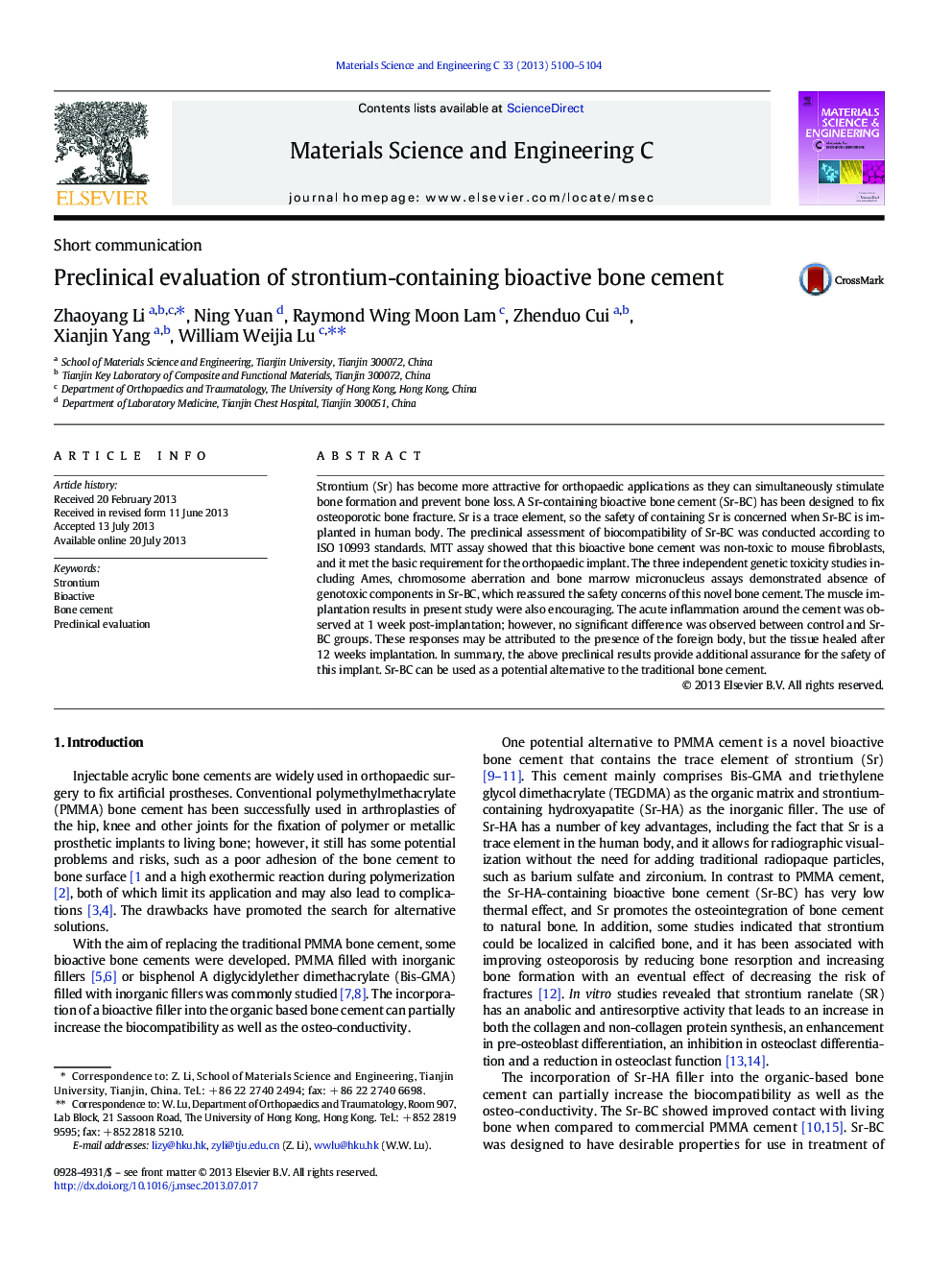| Article ID | Journal | Published Year | Pages | File Type |
|---|---|---|---|---|
| 1429546 | Materials Science and Engineering: C | 2013 | 5 Pages |
•Strontium-containing bioactive bone cement (Sr-BC) was designed.•The biocompatibility of Sr-BC was evaluated according ISO 10993 standards.•Preclinical results provide additional assurance for the safety of Sr-BC.
Strontium (Sr) has become more attractive for orthopaedic applications as they can simultaneously stimulate bone formation and prevent bone loss. A Sr-containing bioactive bone cement (Sr-BC) has been designed to fix osteoporotic bone fracture. Sr is a trace element, so the safety of containing Sr is concerned when Sr-BC is implanted in human body. The preclinical assessment of biocompatibility of Sr-BC was conducted according to ISO 10993 standards. MTT assay showed that this bioactive bone cement was non-toxic to mouse fibroblasts, and it met the basic requirement for the orthopaedic implant. The three independent genetic toxicity studies including Ames, chromosome aberration and bone marrow micronucleus assays demonstrated absence of genotoxic components in Sr-BC, which reassured the safety concerns of this novel bone cement. The muscle implantation results in present study were also encouraging. The acute inflammation around the cement was observed at 1 week post-implantation; however, no significant difference was observed between control and Sr-BC groups. These responses may be attributed to the presence of the foreign body, but the tissue healed after 12 weeks implantation. In summary, the above preclinical results provide additional assurance for the safety of this implant. Sr-BC can be used as a potential alternative to the traditional bone cement.
